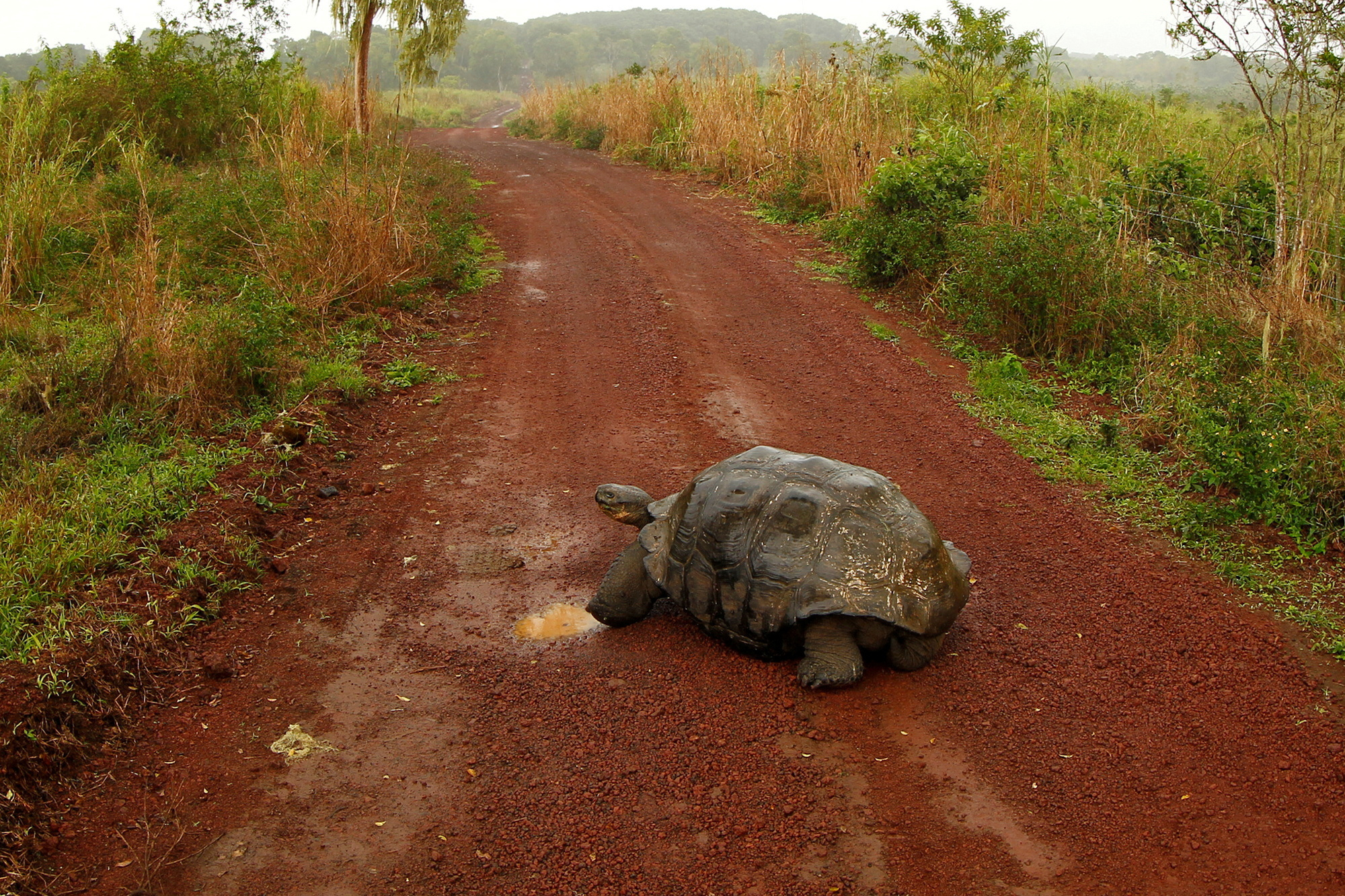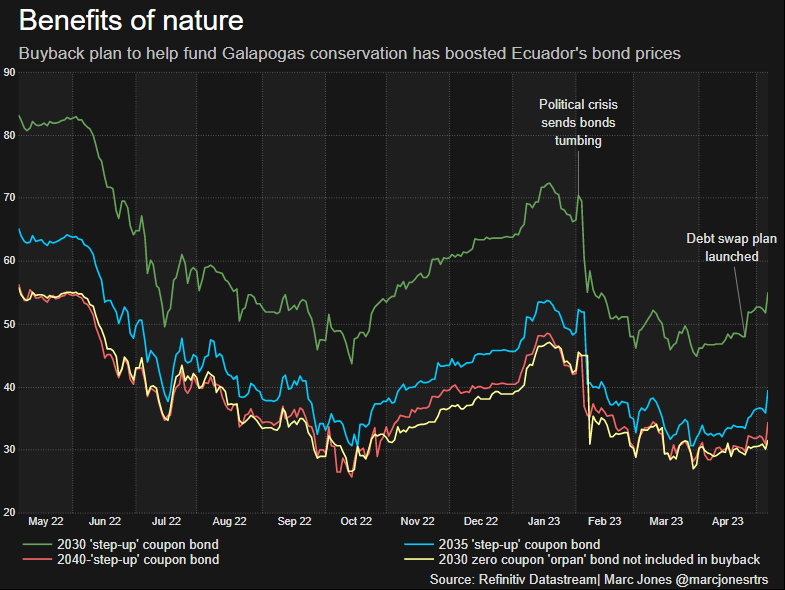
[elfsight_social_share_buttons id=”1″]
Ecuador sealed the world’s largest ‘debt-for-nature’ swap on record on Tuesday, selling a new “blue bond” that will funnel at least $12 million a year into the conservation of the Galapagos Islands, one of the world’s most precious ecosystems.
Having bought back roughly $1.6 billion of the country’s debt at a near 60% discount late last week with the help of Credit Suisse, Ecuador’s minister of foreign affairs Gustavo Manrique Miranda said biodiversity was now a valuable “currency.”
Tuesday’s $656 million blue bond will run until 2041 and gave investors that bought it a 5.645% “coupon” or interest rate, its bankers said.
Ecuador sovereign bonds currently yield from 17% to 26%, but the new bond has a ‘credit guarantee’ from the Inter-American Development Bank and insurance from the U.S. International Development Finance Corp, effectively making it less risky. (DFC)
Debt-for-nature swaps have happened in recent years in Belize, Barbados and Seychelles, but Ecuador’s deal is by far the largest to date, cutting the country’s debt by over $1 billion once the $450 million of total conservation spending is taken into account.
The driver has been the remote Galapagos islands 600 miles off its mainland coast, which inspired Charles Darwin’s Theory of Evolution. Many species there, including giant tortoises, marine iguanas, and Darwin’s finches, are found nowhere else on Earth so their conservation is seen as vital.
While Quito will pocket more than $1 billion worth of savings from the buyback for other purposes, the key appeal has been the environmental benefits and the hope it will be a catalyst for other highly-indebted but nature-rich countries.
Giuseppe Di Carlo, director of the Pew Bertarelli Ocean Legacy, one of the groups involved in the deal, said the $12 million a year earmarked for conservation, plus another $5 million a year being put into funds that should last decades, was an “extraordinary win”.
There will be regular monitoring of the protection work by a newly formed body, with Hawaii’s Papahānaumokuākea marine park seen as a potential template.
Conservation funding there now protects a 200-mile (321.9 km) radius around the archipelago. It has helped revive local tuna and other fish stocks but also increased catches further out where local fishing is still allowed.
Scott Nathan, the chief executive of the DFC said people needed to “stay tuned” for similar deals in other countries and the Galapagos deal had been a long time coming.
It was first floated over three years ago. Final preparations occurred during a time of political turmoil, with Ecuador’s National Assembly seeking to impeach President Guillermo Lasso for alleged embezzlement, which Lasso denies.
The turbulence boosted the economics of the deal, slashing prices of the original bonds, although it also faced troubles of lynchpin lender Credit Suisse, which required an emergency takeover in March by rival UBS.

Copyright 2023 Thompson/Reuters
